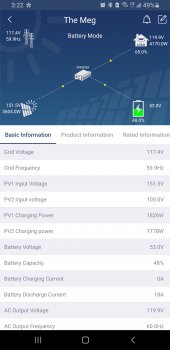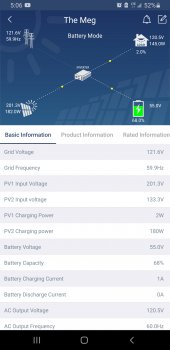Great data, @Lt.Dan
For reference, mind sharing what model AC units you have? Rule of thumb for all HVAC is 2-3% power draw diff per degree lift (approx OAT minus SAT), so that tracks pretty well with your “as high as 1800W” comment. Per AHRI/ASHRAE, design OAT is 95F, aka point where units provide rated capacity.
For reference, mind sharing what model AC units you have? Rule of thumb for all HVAC is 2-3% power draw diff per degree lift (approx OAT minus SAT), so that tracks pretty well with your “as high as 1800W” comment. Per AHRI/ASHRAE, design OAT is 95F, aka point where units provide rated capacity.





